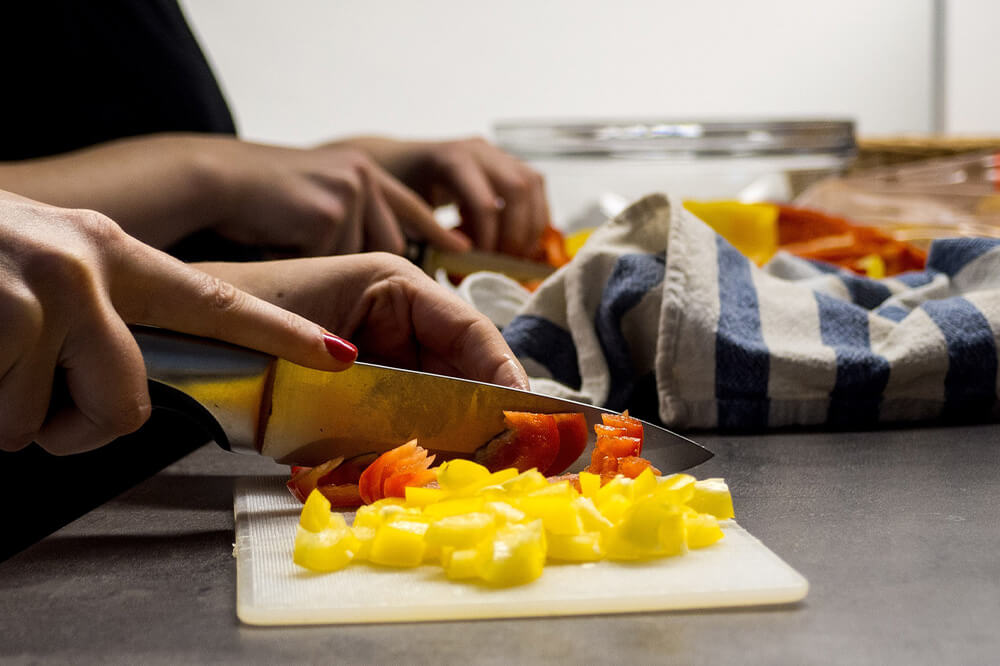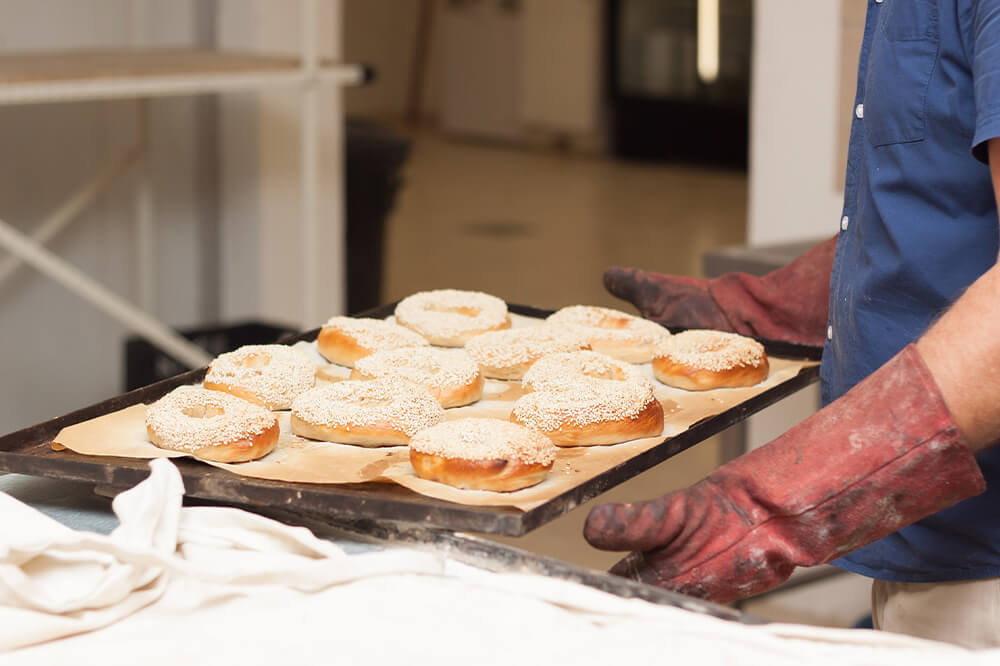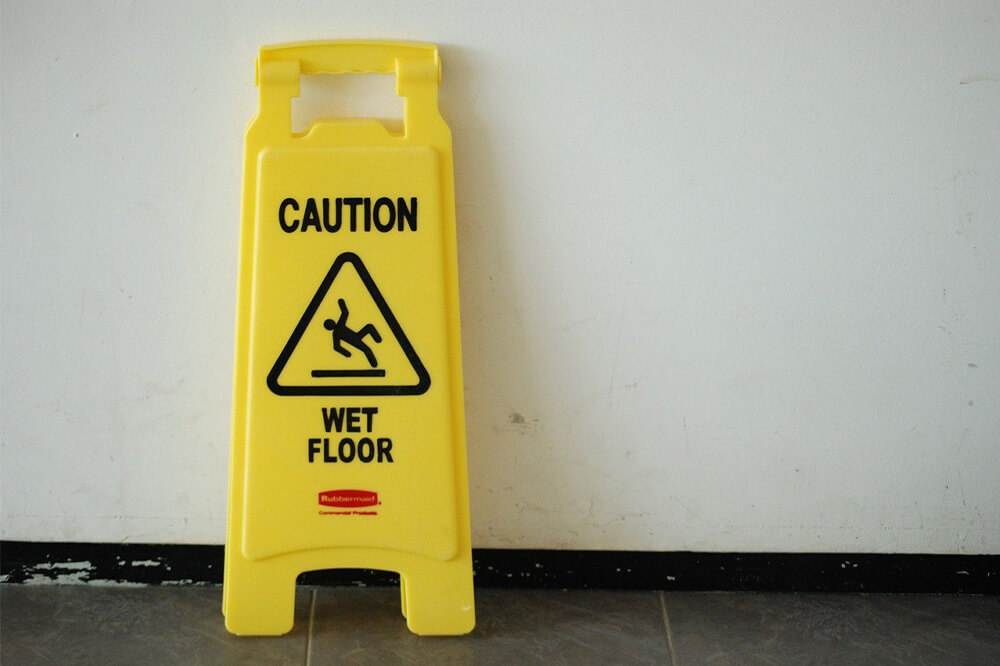Other hazards in the cooking environment
Before we end this first Session, let’s explore some other hazards you may come across in the cooking environment and actions you can take to minimise the risk of harm. Click on the images below to find out more.
Cuts
Working with knives and other sharp objects in the cooking environment means that there is a risk that you could cut yourself or someone else.
There are certain ‘Dos and Don’ts’ that can be applied to minimise the risk of cuts. For example:
Do...
- Use a knife that is suitable for the task and for the food you are working with.
- Keep knives sharp.
- Handle knives carefully when carrying them and washing them up.
- Always carrying knives with the blade pointing dow.
- Always cut on a flat, stable work surface.
- Store knives in a safe place, such as a knife block or knife wrap, cupboard or drawer when not in use.
- Make sure that the use of knives is always supervised by a teacher.
Don’t...
- Leave knives lying around on work surfaces (where they can be accidentally knocked or pushed off) or in washing up bowls.
- Try to catch a falling knife.
- Use a knife as a tin opener.
- Carry knives in your pocket.
- Try to carry a knife while also carrying other objects.
Burns and scalds
Working with hot objects and electrical objects (for example, kettles, ovens, hobs, boiling water, hot food, etc) in the cooking environment means that there is a risk that you could burn/scald yourself or someone else.
You can reduce this risk by:
- Only using hot/electrical objects with teacher’s permission/supervision.
- Only using cordless kettles so they can be kept at a safe distance when plugged in.
- Keeping hair tied back when using ovens/hobs.
- Wearing closed toe shoes.
- Not putting anything other than pans onto the hob.
- Being aware of others when carrying hot food/dishes/trays.
- Using oven gloves when handling hot food/dishes/trays (oven gloves must be dry before use).
- If using a gas oven, always make sure the flame is lit before closing the oven door.
Trips, slips and falls
Food and water spillages can be a common cause of slips, while trip hazards can include boxes, bags, chairs, trailing electrical cables and uneven flooring. Floors can also become slippery during the cleaning process, for example when they have been mopped and are still wet. Wet floor caution signs can be used to warn people of the risk of slipping.
To minimise this risk, you can:
- Make sure that the area around you is clear before you start cooking. In particular, make sure chairs, stools, bags, coats and other belongings are stored away properly, so no-one can trip or fall over them.
- Look out for any loose or trailing cables that you or others could trip over.
- Check floors for spillages so that there is no risk of slipping and falling; if spillages do occur, clean them up immediately (or tell someone else about it and make sure others are aware of the hazard so that they can avoid it until it is cleared away).
- Wear sensible footwear (flat, comfortable shoes with a good, non-slip sole) in the cooking environment.



